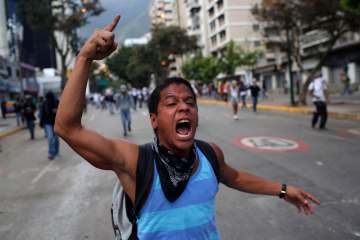Three years after crowds in Tunisia forced long-time dictator President Zine el-Abidine Ben Ali into flight, and kicked off what would later be termed the “Arab Spring,” the world’s streets remain alive with protest. The year 2013 saw incessant calls for change, with social media continuing to play a crucial role in mobilizing demonstrators.
The year’s first protests had been brewing for nearly a month in India, in response to the New Delhi gang-rape of a female student, who later died of her injuries. Violent demonstrations erupted across the Indian capital, where crowds turned out in droves to demand justice. Across the border in Pakistan in November, throngs massed to call for an end to U.S. drone strikes in the country’s mountainous borderlands near Afghanistan. NATO supply lines were blocked in a show of anger.
During the summer, Tahrir Square was reclaimed for a series of protests that eventually resulted in a military coup and the arrest of the popularly elected President Mohammed Morsi in early July. The installment of a military government, lauded by some but loathed by others, triggered counter protests from his supporters in the Muslim Brotherhood that were violently suppressed by the new junta. Then there were the student protests in Chile against the alleged profiteering of the country’s public education system, demonstrations in Istanbul over the removal of a historic park and the brave rallies held in Russia in defiance of state-enforced antigay policies.
At the year’s end, Thailand’s color-coded protests sprung to life after three years of calm. Middle class Yellow Shirts marched through their sprawling capital Bangkok to express revulsion for Prime Minster Yingluck Shinawatra and her exiled brother, Thaksin. Across the world in Ukraine’s capital Kiev, demonstrators braved frosty temperatures to call for closer ties with Europe. The revolution didn’t come to fruition in 2013, but it was most certainly televised. —David Stout






